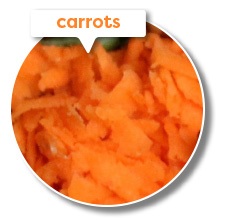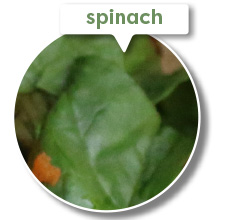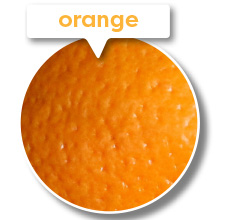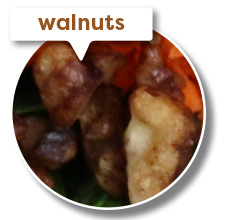How healthy is your relationship? Take the quiz
Reading Time: 5 minutes Is your partner’s behavior normal or a big red flag that they might be controlling or abusive? Take our quiz to see if you’re in a healthy relationship.
Reading Time: 5 minutes Is your partner’s behavior normal or a big red flag that they might be controlling or abusive? Take our quiz to see if you’re in a healthy relationship.
Reading Time: 4 minutes How the career center can help you get a job.
Reading Time: 5 minutes Take this quiz to learn which of your favorite food items have more sugar than others.
Reading Time: 6 minutes Learn the risks, etiquette, and damage-limitation strategies of sexting.
Reading Time: 9 minutes From decor, to temperature, to white noise, fellow students offer their tips on how to make your bedroom a sleep-happy space.
Rate this article and enter to win
Did you know frozen veggies are just as nutritious as fresh? We’ll show you how to use your frozen peas for more than icing down sore knees—like making a simple veggie burger that’s big on flavor and short on time.
Before we begin, let’s clear the air: Frozen vegetables are real vegetables. Besides being just as nutrient-rich as fresh vegetables, according to recent research, they’re also way more affordable, require less prep, and can hang out in the back of the freezer without turning all sorts of moldy. Now that’s something we can get behind.

Those wonderful white beans are fiber filled and protein packed. The spinach contains high amounts of Vitamins K and A, and the onions add Vitamin C to your diet.




 Scott V.
Scott V.
Third-year student at St. Louis University School of Law, Missouri
Finding a low-sodium, high-nutrient meal that still makes me excited for dinner is not easy, but this recipe meets the criteria. I especially appreciate the level of flavor because of how healthy it is.
Cost?
![]()
The total cost was about $20, which is fairly expensive, but you might have many of the ingredients on hand already if you cook regularly.
Taste?
![]()
I added some different seasonings (sage and parsley) to play with the flavor profile. Next time, I want to try a more Southwest style, with red pepper flakes, cumin, cayenne pepper, etc.
Prepared and photographed by Joanna Carmona
Adapted from:
https://naturallyella.com/chickpea-and-spinach-veggie-burgers/
https://cooking.nytimes.com/recipes/1012989-white-bean-burgers
Rate this article and enter to win
We tend to anticipate summer as if it’s a magical stress-free season in which we finally get to do all the things. In a recent CampusWell survey, nine out of ten students who responded said they plan or hope to be routinely physically active through the warmer months. But reality happens (even in this fantasy season), and unless you look out for your fitness, it may accidentally fall off your to-do list.
Behavioral research shows that when we make a plan, we’re more likely to meet our goals. What else helps? Doing what we enjoy. Involving friends or accountability partners. Anticipating obstacles and how we’ll get around them. Setting realistic goals. Here’s how to get into a summer fitness mindset that sticks:
Print the potent, powerful, practical plan for an actively awesome summer
Think about your summer surroundings and how you can use them to be physically active:
Will you have lots of time, some time, or basically no time at all? Even if you have just a few minutes each day, you’ll still benefit from making a plan. Always put your fitness plans onto your calendar to protect that time.
My summer is…
What do you actually like doing? Which physical activity has given you a smidgen of pleasure in the past?
Is there an activity that you’ve wanted to try? Can you give it a go this summer? (Yes, you probably can.)
For example:
Think about how much money you’ll realistically be able to spend on fitness this summer.
What has helped you be active in the past? What or who could help you this summer?
What do you want to achieve this summer?
And what can you realistically achieve this summer?
Which moderate goals will help you get into a groove you can maintain in the fall?
For example:
What demands or inconveniences could get in the way of your summer fitness plan? How can you keep moving anyway?
Activity + % of students who expect to do this frequently or regularly in summer
Source: Student Health 101 survey, February 2016. 1,500 students answered this question. Not representative of students nationally.
 “I picked up archery a couple of summers back and have returned every summer since. This year, I already have plans to pick up paintball/airsoft, and the way I’ve been introduced to that was very physical. I’m excited!”
“I picked up archery a couple of summers back and have returned every summer since. This year, I already have plans to pick up paintball/airsoft, and the way I’ve been introduced to that was very physical. I’m excited!”
—Max S., fourth-year undergraduate, Minneapolis College of Art and Design, Minnesota
“I had a summer internship near campus. I started rock climbing at the indoor gym, and I loved it! It was physically demanding but really fun, and that kept me going back. For the first time, I started to see my muscles grow, and I felt good about myself and about my physical wellbeing. I got to know a lot of people. That summer was so important to me because I finally found a physical activity that I loved and that helped me learn to love and take care of myself.”
—Nicole H., first-year graduate student, Rochester Institute of Technology, New York
“I want to learn to surf, but I’ll also be stacking hay bales for work as well as going for a family run, playing some pickup sports with friends, working out with my old football team, or finding a trampoline park or gym to mess around in.”
—Bryson S., first-year undergraduate, Old Dominion University, Virginia
“I have tried hiking more, and I incorporated fishing. Instead of getting in a boat, I decided to hike to a stream or river into the woods, stopping to fish now and then. The breaks give me downtime that is positive. I really lose track of time and distance that I have gone.”
—Emily L., third-year undergraduate, University of New England, Maine
“Freeletics [individualized high-intensity training via an app] has been an awesome thing. It helps me work out in my lab. It just needs 2×2 meters of space and you’re good to go! It is quite literally a community and we help each other out.”
—Rishabh T., second-year graduate student, Creighton University, Nebraska
“Obstacle course races! I do quite a few of them over the summer now, after [getting] hooked two summers ago!”
—Rachel S., fourth-year undergraduate, Oregon Institute of Technology
“I’d like to get back into the routine of doing outdoor boot camp workouts. Being around other people really keeps you motivated. Running events are fun, whether a 5k or half marathon with friends and family.”
—Ben G., fourth-year undergraduate, Harrisburg University of Science and Technology, Pennsylvania
“I have joined a Bikram yoga studio. I began commuting [by bike] to work last summer (6-mile round trip). I even joined a CrossFit studio. I’m training for a half marathon, and this summer I would like to focus on building muscle.”
—Vikas B., third-year undergraduate, Johns Hopkins University, Maryland
[survey_plugin]
Article sourcesStudent Health 101 survey, June 2016.
The egg whites are low in cholesterol and saturated fat, the cottage cheese adds calcium to your diet, and the rolled oats are full of fiber.



 Prepared and photographed by Joanna Carmona
Prepared and photographed by Joanna Carmona
Pancakes are a delicious way to start the day (or end the day) (or add an enjoyable diversion to any part of the day). Pancakes needn’t be all about the carbs. This easy, high-protein recipe uses whole foods, avoiding protein powder (which can be high in sugar and additives, and more expensive than actual food).
 Katrina Flanders
Katrina Flanders
fourth-year graduate student, University of Victoria, British Columbia
“I try to eat as healthy as I can but that doesn’t always happen. This recipe seemed easy enough to make with very little prep. Plus it’s cost effective and tasty—and healthy (besides the chocolate chips I added). I’ll definitely be making these again!”
Cost

I had almost everything I needed already, but even so, this is a pretty inexpensive breakfast to make.
Taste

I was a little skeptical at first, but they were very good! Not too dense, super filling, and very flavorful due to the vanilla and cinnamon. I used Greek yogurt instead of cottage cheese.
Rate this article and enter to win
Every so often, a dish comes along that fulfills all your nutritional requirements in one go. This is that moment. Say hello to pineapple fried rice.
Pineapple fried rice offers everything you need for a balanced meal: fruit, vegetables, wholegrains, and healthy protein. It incorporates several foods from plants, along with a moderate serving of chicken—leaner and healthier than red meat. (Alternatively, use shrimp, tofu, or tempeh.) And it’s easy to make.
We live in a world full of competing nutritional claims, evolving scientific findings, and various pyramids, pie charts, and plates. How to filter all that info and translate it into simple, healthy meals isn’t always obvious. At SH101, these two guidelines helped us do it—and showed us, in the end, the glory of pineapple fried rice.
1. Avoid getting hung up on popular food dogmas
“Don’t get caught in the weeds by thinking healthy means non-GMO, organic, gluten-free, or ‘natural,’” says Dr. Christine Rosenbloom, nutrition professor emerita at Georgia State University. Instead, choose foods close to their original state: “an apple instead of apple juice, or lean grilled steak instead of bacon or hot dogs, and load up your plate with veggies and healthy carbs.” (Healthy carbs include brown rice, quinoa, seeds, vegetables, and whole fruits.)
2. Find a guide from a neutral source and get to know it
For example, to help us untangle the mess of nutritional advice out there, Harvard School of Public Health created the Healthy Eating Plate. This is an alternative to MyPlate, created by the US Department of Agriculture (USDA). Our recipe for pineapple fried rice fulfills the criteria of the Healthy Eating Plate.
Why did Harvard decide to design a new plate? Because experts at Harvard noticed some gaps in MyPlate. In addition, they wanted to promote nutritional recommendations based fully in scientific research, free of food industry influence.
What changed and why? Check out the two plates side-by-side

Source: Harvard School of Public Health
Healthy oils
Canola, olive, coconut, or sunflower oil for cooking the veggies
Vegetables
Carrots, peas, bell pepper, onion, broccoli, and scallions
Fruits
Pineapple
Whole grains
Brown rice
Healthy protein
Chicken, tofu, or tempeh
Swap out ingredients
“Instead of saying, ‘I’ll give up pizza,’ try leaner meat toppings like turkey pepperoni or lean ham with lots of veggies such as peppers, tomato, or mushrooms. Better yet, watch YouTube videos on how to make simple meals and learn how to cook,” says Dr. Rosenbloom.
Step up your pasta
“Invest in a spiralizer ($20 from large chain stores) to make nutrient-packed noodles from vegetables like zucchini, sweet potato, carrots, turnips, and more. Another option is to buy pre-packed pasta made from other ingredients, such as corn or beans, which can pack in more protein, fiber, and nutrients,” says Sonya M., a third-year undergraduate at Northern Illinois University.
Snack healthy
“Make trail mix with nuts, seeds, dried fruit, and wholegrain breakfast cereals. This is a great snack that you can carry with you that will help decrease the urge to stop and buy candy or chips,” says Dr. Koch.
Get colorful
“When I was in Katimavik [a Canadian volunteer program], we had to cook using the ‘five-color’ rule. There had to be five different-colored foods for each meal, and two foods that were the same color wouldn’t count (e.g., cauliflower and pasta are both white). We’d use things like red onions (purple) instead of white; yellow, orange, and red peppers instead of green; and sweet potatoes instead of regular,” says Ashe M., second-year undergraduate at Lakehead University in Ontario.
Eat before eating
“I may have an appetizer and drink water so I don’t overeat when I get my meal,” says Martin M., a second-year undergraduate at San Bernardino Valley College in California.
“Pineapple fried rice is a nutritious recipe because it has so many different foods from plants and a small amount of healthy animal protein from the chicken,” says Dr. Pamela Koch, executive director, associate research professor, and registered dietitian at the Laurie M. Tisch Center for Food, Education & Policy at Columbia University, New York.
 Chicken: Lean protein containing the building blocks needed to form lean muscle mass and help us feel full
Chicken: Lean protein containing the building blocks needed to form lean muscle mass and help us feel full
Pineapple: High in Vitamin C (for tissue growth and repair)
Carrots: Rich in beta-carotene, converted into Vitamin A in the body (for immune function, reproduction, vision, and cell activity)
Peas: Quality carbs (for energy and for fiber, which lowers disease risk) and additional protein (to repair and build cells)
Red bell pepper: High in Vitamin C and Vitamin A
Onion: Rich in sulfuric compounds and antioxidants (various health benefits)
Scallions: Good source of Vitamin C and potassium (various health benefits)
Broccoli: Contains Vitamins A and C
Precooked brown rice: Wholegrain, with more nutrients and fiber than white rice
Print or save your step-by-step guide to pineapple fried rice
Christine Rosenbloom, PhD, RDN, nutrition professor emerita, Georgia State University.
Pamela Koch, EdD, RD, executive director, associate research professor, Laurie M. Tisch Center for Food, Education & Policy, Columbia University, New York.
Harvard T.H. Chan School of Public Health. (2011). Healthy Eating Plate & Healthy Eating Pyramid. Retrieved from https://www.hsph.harvard.edu/nutritionsource/healthy-eating-plate/
Harvard T.H. Chan School of Public Health. (2011). Healthy Eating Plate vs. USDA’s MyPlate. Retrieved from https://www.hsph.harvard.edu/nutritionsource/healthy-eating-plate-vs-usda-myplate/
Senyei, K. (2013, July 31). Pineapple chicken fried rice. [Blog]. Retrieved from https://www.justataste.com/easy-pineapple-chicken-fried-rice-recipe/
Rate this article and enter to win
Are you a master or disaster in the kitchen? Most likely, you’re somewhere in between. If the thought of moving beyond the microwave creeps you out, that’s all the more reason to get the hang of basic cooking techniques and quickie recipes.
Your healthier, prep-it-yourself options go way beyond salads (not dissing salads—just saying). Want some grilled cheese with those fries? Here we demo a revamped version of the classic American comfort meal.
Gooey cheese melted between two slices of bread: Can it get any better than that? Actually, it can.
Veggies
The fresh tomato adds a burst of flavor, Vitamins A and C, and lycopene, an antioxidant. We’re sneaking in a bit of spinach too, because it’s packed with nutrients, including magnesium, calcium, zinc, iron, manganese, Vitamins A and C, folate, and fiber. You can hardly taste the spinach, so even if greens aren’t your thing, this likely will be.
Bread
Go for a whole-wheat or wholegrain bread. This crisps up nicely like a grilled cheese should, provides a sturdy base to balance the melting cheese, and adds fiber and antioxidants. Look for bread that has wholegrains or whole-wheat flour listed as the first ingredient and contains at least 3 g of fiber and 3 g of protein with little to no added sugar (aim for less than 3 g of sugar) per serving.
Cheese
What’s not to love? Cheese is flavorful, it melts into ooey gooey glory, and it tastes ridiculously good. It’s got protein and calcium, but it falls a little short on the healthfulness factor due to the high fat and calorie content. The solution? Choose a strongly flavored cheese, so a little goes a long way. Our favorite for grilled cheese is sharp cheddar. Other options: Swiss, pepper jack (for a spicy kick), goat (if you’re feeling adventurous), or crumbled feta. You can also use dairy-alternative cheeses made from soy or almond.





Who doesn’t love their french fries soft on the inside, crunchy on the outside? But that frying thing is so 10 years ago. Try this much- better-for-you baked version.
This recipe is what you’ve been looking for—the ideal way to recognize World Cancer Day (February 4) and National Wear Red Day (February 5), organized by the National Heart, Lung, and Blood Institute. Right? Way to let those awareness days keep you alive and kicking (as in kickboxing) longer.
Make these fries at home or school, and bake instead of fry them. Baking your fries removes that whole restaurant-trans-fat situation (the worst type of fat for your health) and reduces the amount of fats and calories overall. Deep-frying foods in oil—the way most french fries are cooked—adds a load of fat and increases your risk of chronic health issues, such as type 2 diabetes and heart disease. Also, you won’t set the kitchen on fire.
Serving size: 2







Photography by Joanna Carmona
American Heart Association. (n.d.). Trans fats. Retrieved from https://www.heart.org/HEARTORG/GettingHealthy/NutritionCenter/HealthyEating/Trans-Fats_UCM_301120_Article.jsp#.Voq4smQrIsk
Cahill, L. E., Pan, A., Chiuve, S. E., Sun, Q., et al. (2014). Fried-food consumption and risk of type 2 diabetes and coronary artery disease: A prospective study in 2 cohorts of US women and men. The American Journal of Clinical Nutrition, 100(2), 667–675.
Colorado State University. (2015). Colorado spinach. Retrieved from https://farmtotable.colostate.edu/docs/spinachfactsheet.pdf
Harvard Health Publications. (2015, February 3). The truth about fats: The good, the bad, and the in-between. Retrieved from https://www.health.harvard.edu/staying-healthy/the-truth-about-fats-bad-and-good
MedlinePlus. (n.d.). Food label guide for whole wheat bread. U.S. National Library of Medicine. Retrieved from https://www.nlm.nih.gov/medlineplus/ency/imagepages/19343.htm
TeensHealth. (2014, September). Which bread is better: Whole wheat or whole grain? Retrieved from https://kidshealth.org/teen/food_fitness/nutrition/grains.html
United States Department of Agriculture. (2012, October). Tomatoes, fresh. Household USDA Foods Fact Sheet. Retrieved from https://www.whatscooking.fns.usda.gov/sites/default/files/factsheets/HHFS_TOMATOES_FRESH_Oct2012.pdf
University of California Berkeley. (n.d.). Is cheese bad for your health? Berkeley Wellness. Retrieved from https://www.berkeleywellness.com/healthy-eating/nutrition/slideshow/cheese-bad-your-health
This quickie lunch is all about whole foods. No, not the grocery store chain. We’re talking ingredients that stay as close as possible to their natural state. Here, we’re featuring a vegetarian burrito bowl with black beans, veggies, and rice. Eating whole foods ensures we get the maximum amount of nutrients without the additives found in processed foods.
Add chicken, use kale instead of lettuce, swap brown rice for quinoa, or roast your vegetables instead of leaving them raw. Not into cheddar? Sprinkle on some Cotija or Monterey Jack instead.
1 Chop up the lettuce, bell pepper, and avocado.
2 Drain and rinse the black beans. Add the cumin and cayenne pepper. Sauté on low heat until the food is warm.
3 Heat the brown rice in the microwave.
4 Combine the warm ingredients (the black beans and rice) with the lettuce, pepper, avocado, and salsa.
5 Add your toppings (cheese, lime juice, cilantro, and so on) and mix everything together.
Nutrition tips: Those black beans contain fiber and protein to keep you satisfied. The bell pepper gives you a big dose of Vitamin C, and avocado is one of those fats that tastes amazing and is good for you.




 |
Richard BuotePhD candidate in medicine (community health), Memorial University of Newfoundland, Newfoundland and Labrador |
|---|
These black bean burrito bowls are a great solution to those nights I don’t feel like cooking. This recipe is super quick, satisfying, and delicious. As a health-conscious student on a budget, this is a perfect weeknight meal.

This recipe gives you about three meals for $20, but there are ways to reduce that. Dried black beans and rice are cheaper than the prepared versions.

So yummy; I will definitely be making this again. I’d like to try it with the addition of some other vegetables like red onion and roasted sweet potato.
Photos and text by Joanna Carmona
Rate this article and enter to win
Happiness is…a salad? Before you count us out as weirdos with a concerning affection for kale, let us explain. What we eat can affect our moods for up to two days afterward, research shows.
Undergraduates who ate foods high in calories, saturated fat, and sodium reported feeling moody and blah in the aftermath, said Dr. Helen Hendy, a psychologist at Pennsylvania State University, in the journal Appetite (2012).
But students who ate fruits and vegetables felt happier until the following day, even after other influences had been ruled out, according to “Many Apples a Day Keep the Blues Away” (2013), a British study.
So go ahead and get your greens on with our Ultimate Easy Happy Salad. We’ll tell you what to do and why it works, and you’ll be a believer in no time.
Click each to learn more:

$1.50 per 16 oz. pack
Vitamin E stimulates dopamine, a neurotransmitter associated with feelings of reward and pleasure. Pairing complex carbs (e.g., veggies) with a healthy source of protein and fat (e.g., hummus) allows the natural sugars to release slowly, enabling blood sugar levels to remain stable and keeping you satisfied longer.
Vitamin A is here too, and is good for our skin.
Dip in hummus or ranch dressing; add shredded carrots to stir-fries or salads.

$2.50 per 8 oz. pack
Vitamins B6, B9, and C, and omega-3s help synthesize mood-boosting brain chemicals, such as serotonin and dopamine.
Antioxidants help us resist disease.
Sauté, add to smoothies, or use in our Ultimate Easy Happy Salad.

$1.25 for a navel orange
Vitamin C boosts energy levels by aiding iron absorption; Vitamin B6 and B9 (folate) appear to protect us from depression; thiamine is linked to improved mood.
Vitamin C protects the immune system (but won’t cure your cold).
Peel, chomp, wipe fingers.

$6.00 for a 6.5 oz. tub
Zinc and omega-3 fatty acids promote calm. Vitamin B9 (folate) appears to protect us from depression.
Omega-3 fatty acids help decrease inflammation and disease risk.
From the packet—or crack ’em open. One serving of nuts is approximately 1 oz. (a handful)—about 14 walnut halves.
Carol Landau, PhD, clinical professor of psychiatry and human behavior and medicine, Alpert Medical School, Brown University, Providence, Rhode Island.
Abou-Saleh, M. T., & Coppen, A. (2006). Folic acid and the treatment of depression. Journal of Psychosomatic Research, 61(3), 285–287. doi:10.1016/j.jpsychores.2006.07.00
Coppen, A., & Bolander-Gouaille, C. (2005). Treatment of depression: Time to consider folic acid and Vitamin B12. Journal of Psychopharmacology, 19(1), 59–65.
Hakkarainen, R., Partonen, T., Haukka, J., Virtamo, J., et al. (2004). Is low dietary intake of omega-3 fatty acids associated with depression? American Journal of Psychiatry, 161(3), 567–569. Retrieved https://www.ncbi.nlm.nih.gov/pubmed/14992986
Hendy, H.M. (2012). Which comes first in food—mood relationships, foods or moods? Appetite, 58(2), 771–775. doi:10.1016/j.appet.2011.11.014
Hopf, S.M. (2011). You are what you eat: How food affects your mood. [Blog post.] Dartmouth Undergraduate Journal of Science. Retrieved from https://dujs.dartmouth.edu/fall-2010/you-are-what-you-eat-how-food-affects-your-mood#.UzluXleqSFh
Hvas, A. M., Juul, S., Bech, P., & Nexo, E. (2004). Vitamin B6 level is associated with symptoms of depression. Psychotherapy and Psychosomatics, 73(6), 340–343.
Kimiecik, J. (2011). Exploring the promise of eudaimonic well-being within the practice of health promotion: The “how” is as important as the “what.” Journal of Happiness Studies, 12(5), 769–792. doi:DOI 10.1007/s10902-010-9226-6
Peet, M., & Stokes, C. (2005). Omega-3 fatty acids in the treatment of psychiatric disorders. Drugs, 65(8), 1051–1059.
Prices from Peapod/Stop&Shop. Retrieved August 2016 from: www.peapod.com.
Sawada, T., & Yokoi, K. (2010). Effect of zinc supplementation on mood states in young women: A pilot study. European Journal of Clinical Nutrition, 64; 331–333. doi:10.1038/ejcn.2009.158
Swardfager, W., Herrmann, N., & McIntyre, R. S. (2013). Potential roles of zinc in the pathophysiology and treatment of major depressive disorder. Neuroscience and Biobehavioral Review, 37(5), 911–929.
White, B., Horwath, C., & Conner, T. S. (2013). Many apples a day keep the blues away—daily experiences of negative and positive affect and food consumption in young adults. British Journal of Health Psychology, 18(4), 782–798.
Wyatt, K. M., Dimmock, P. W., & Jones, P. W. (1999). Efficacy of vitamin B-6 in the treatment of PMS. British Journal of Medicine, 318(7195), 1375–1381.